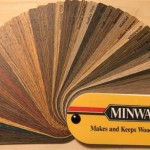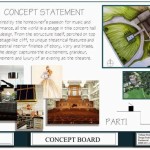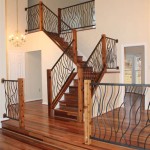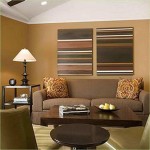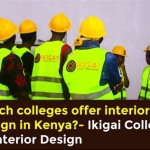Modern Bar Interior Design Ideas: A Visual Guide
The landscape of modern bar interior design is a constantly evolving realm, marked by a fusion of functionality, aesthetics, and technological integration. For bar owners and designers alike, staying abreast of current trends is crucial for creating spaces that are both inviting and efficient. Access to visual inspiration, particularly readily available resources showcasing diverse design concepts, can prove to be invaluable in the creative process.
This article explores several key aspects of modern bar design, offering a detailed examination of prevalent styles, materials, and technologies shaping the industry. While providing specific "free printable" resources is beyond the scope of this text, the discussion will cover the types of visual aids readily available online and how to effectively utilize them for design planning. The goal is to provide a framework for developing exceptional bar interiors that cater to contemporary tastes and operational necessities.
Key Point 1: Understanding Current Design Trends
Modern bar design encompasses a wide array of styles, each with its distinct characteristics. Several trends are particularly prominent and influential in shaping the aesthetic of contemporary bars. These include, but are not limited to:
-
Minimalism:
Characterized by clean lines, uncluttered spaces, and a focus on functionality. The color palette typically leans towards neutral tones, with accents of color strategically incorporated to create visual interest. Materials such as concrete, steel, and glass are commonly used to create a sleek and modern aesthetic. The emphasis is on simplicity and efficiency, creating a space that feels spacious and inviting.-
Industrial Chic:
This style draws inspiration from factories and warehouses, featuring exposed brick, metal beams, and reclaimed wood. The color scheme often includes grays, browns, and blacks, with pops of metallic accents. Lighting fixtures are typically utilitarian in design, such as pendant lights with exposed bulbs. The overall effect is a raw and edgy aesthetic that appeals to a younger demographic.-
Mid-Century Modern:
This classic style is experiencing a resurgence in popularity, characterized by clean lines, organic shapes, and a focus on natural materials. Wood is a dominant element, often used in furniture and paneling. The color palette typically includes warm tones, such as browns, oranges, and yellows, with accents of teal and avocado green. The overall effect is a sophisticated and retro-inspired aesthetic.-
Biophilic Design:
This trend focuses on incorporating elements of nature into the interior space. This can be achieved through the use of plants, natural light, and natural materials such as wood and stone. Living walls, indoor gardens, and water features are often incorporated to create a calming and relaxing atmosphere. The goal is to connect patrons with nature, promoting a sense of well-being and reducing stress.-
Art Deco Revival:
A resurgence of the opulent and geometric designs of the 1920s and 1930s. Expect bold patterns, luxurious materials like velvet and brass, and dramatic lighting. This style offers a glamorous and sophisticated atmosphere.Identifying the target demographic is crucial for selecting the appropriate design style. An upscale cocktail bar targeting a sophisticated clientele may opt for a Mid-Century Modern or Art Deco Revival design, while a sports bar aiming for a more casual atmosphere may choose an Industrial Chic or a minimalist approach. Thorough market research and a clear understanding of the target audience are essential for making informed design decisions.
Visual resources, such as online image galleries, design blogs, and social media platforms, can provide a wealth of inspiration for identifying current design trends. These platforms offer a wide range of images showcasing various bar interiors, allowing designers and owners to visualize different styles and identify elements that resonate with their vision.
Key Point 2: Material Selection and Lighting Considerations
The choice of materials and lighting plays a critical role in shaping the overall ambiance of a modern bar. Materials should be selected not only for their aesthetic appeal but also for their durability, ease of maintenance, and acoustic properties. Lighting is equally important, influencing the mood and highlighting key design features.
Material Considerations:
-
Countertops:
Common countertop materials for bars include quartz, granite, concrete, and wood. Quartz and granite offer durability and resistance to stains and scratches, making them ideal for high-traffic areas. Concrete provides a modern and industrial aesthetic, while wood adds warmth and character. The choice of material should be based on the desired aesthetic, budget, and operational requirements.-
Flooring:
Popular flooring options for bars include tile, concrete, wood, and epoxy. Tile offers durability and water resistance, making it suitable for areas prone to spills. Concrete provides a modern and industrial look, while wood adds warmth and character. Epoxy flooring offers a seamless and durable surface that can be customized with various colors and patterns. Anti-slip flooring is a crucial safety consideration, particularly in areas with high foot traffic.-
Wall Finishes:
Wall finishes can range from paint and wallpaper to wood paneling and exposed brick. Paint offers versatility and affordability, while wallpaper can add texture and pattern. Wood paneling provides warmth and sophistication, while exposed brick creates an industrial chic aesthetic. Acoustic panels can be used to reduce noise levels and improve the overall sound quality of the space.-
Furniture:
Bar stools, tables, and chairs should be selected for their comfort, durability, and aesthetic appeal. Metal and wood are common materials for bar stools, while tables can be made of wood, metal, or glass. Upholstered chairs and booths can provide a comfortable and inviting seating option. The furniture should be scaled appropriately to the size of the space and designed to facilitate interaction among patrons.Lighting Considerations:
-
Ambient Lighting:
Provides general illumination for the space. Recessed lighting, pendant lights, and chandeliers are common options for ambient lighting. The level of ambient lighting should be carefully considered to create the desired mood. Dimmer switches can be used to adjust the lighting levels throughout the day.-
Task Lighting:
Provides focused illumination for specific tasks, such as preparing drinks or serving customers. Under-cabinet lighting, track lighting, and spotlights are common options for task lighting. Task lighting should be bright enough to allow employees to perform their duties safely and efficiently.-
Accent Lighting:
Used to highlight key design features, such as artwork, architectural details, or product displays. Spotlights, wall sconces, and LED strip lighting are common options for accent lighting. Accent lighting can be used to create visual interest and draw attention to specific areas of the bar.-
Color Temperature:
The color temperature of the lighting can significantly impact the ambiance of the space. Warm lighting (2700-3000K) creates a cozy and inviting atmosphere, while cool lighting (4000-5000K) provides a more energetic and vibrant feel. The choice of color temperature should be based on the desired mood and the overall design aesthetic.-
Smart Lighting Systems:
Integrating smart lighting systems allows for greater control over the lighting environment, enabling automated adjustments based on time of day, occupancy, or specific events. This technology can contribute to energy efficiency and enhance the overall customer experience.Visual resources, such as lighting catalogs and material samples, can be invaluable in the selection process. These resources allow designers and owners to evaluate different materials and lighting options and visualize how they will look in the space. Mock-ups and prototypes can also be used to test the functionality and aesthetics of different design elements.
Key Point 3: Technology Integration and Space Planning
Incorporating technology and optimizing space utilization are essential for creating a modern and efficient bar. Technology can enhance the customer experience, streamline operations, and improve overall profitability. Careful space planning ensures that the bar is both functional and inviting.
Technology Integration:
-
Point of Sale (POS) Systems:
Essential for managing orders, processing payments, and tracking inventory. Modern POS systems offer a wide range of features, such as online ordering, table management, and customer loyalty programs. These systems can significantly improve efficiency and reduce errors.-
Audio-Visual (AV) Systems:
Enhance the customer experience by providing entertainment and information. Sound systems can be used to create the desired ambiance, while televisions can be used to display sports games, news, or promotional content. A well-designed AV system can significantly enhance the atmosphere of the bar.-
Digital Signage:
Used to display menus, promotions, and other information in a visually appealing manner. Digital signage can be easily updated and customized, making it a more effective communication tool than traditional printed signage. Digital menu boards are becoming increasingly popular in modern bars.-
Smart Home Automation:
Integrating smart home automation systems can enhance energy efficiency and improve the overall customer experience. Automated lighting, temperature control, and security systems can be controlled remotely, providing greater convenience and security.-
Interactive Elements:
Touchscreen menus, digital ordering systems, and interactive games can enhance customer engagement and create a more immersive experience.Space Planning Considerations:
-
Bar Layout:
The layout of the bar should be designed to maximize efficiency and facilitate interaction among patrons. The bar should be easily accessible to both customers and staff, and the placement of equipment and supplies should be carefully considered. Ample workspace should be provided for bartenders to prepare drinks efficiently.-
Seating Arrangement:
The seating arrangement should be designed to accommodate different group sizes and preferences. A mix of bar stools, tables, and booths can provide a variety of seating options. The spacing between tables should be adequate to allow for comfortable movement and conversation.-
Traffic Flow:
The traffic flow throughout the bar should be carefully planned to minimize congestion and ensure smooth movement of customers and staff. Designated pathways should be provided for customers to access the bar, restrooms, and other amenities. Clear signage can help to guide customers through the space.-
Storage Space:
Adequate storage space should be provided for supplies, equipment, and inventory. Storage areas should be organized and easily accessible to staff. Proper ventilation and temperature control are essential for storing perishable items.-
Accessibility:
The bar should be designed to be accessible to people with disabilities, in compliance with the Americans with Disabilities Act (ADA). Ramps, accessible restrooms, and accessible seating should be provided.Visual resources, such as architectural plans and 3D renderings, can be used to visualize different space planning options. These resources allow designers and owners to experiment with different layouts and configurations and identify the most efficient and aesthetically pleasing solution. Consulting with an experienced architect or interior designer is highly recommended for optimizing space utilization and ensuring compliance with building codes and regulations.

The 20 Best Bar Design Ideas How To A 2025

19 Wet Bar Ideas For A Stylish Functional Home Design Sugar Cloth

Home Bar Ideas 20 Designs For You To Chill Entertain At

10 Modern Bar Basement Ideas With Images

Open Bar Shelves Design Ideas

19 Wet Bar Ideas For A Stylish Functional Home Design Sugar Cloth

Bar Nook Design Ideas

10 Modern Bar Basement Ideas With Images

10 Inspiring Interior Design Ideas For Creating Memorable Restaurant Ambience Fsr

Open Bar Shelves Design Ideas
Related Posts

